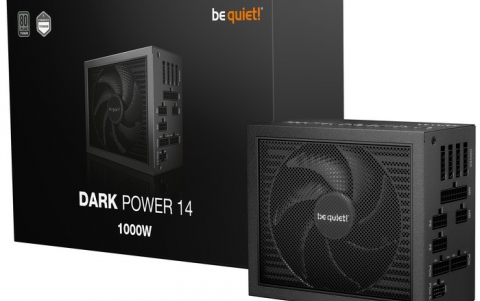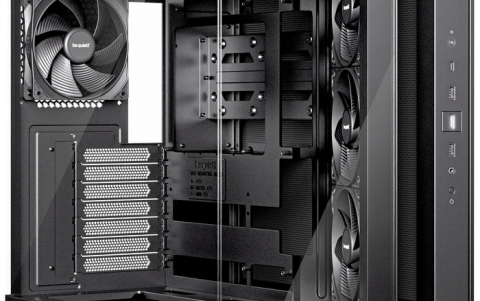BTC DRW1008IM
5. DVD Error Correction Tests
Review Pages
2. Data CD Reading Tests
3. CD Error Correction Tests
4. DVD Reading Tests
5. DVD Error Correction Tests
6. Protected Disc Tests
7. CD-DA - DAE Tests
8. CD Recording Tests
9. 3T Jitter Tests - Page 1
10. 3T Jitter Tests - Page 2
11. C1 / C2 Error Measurements
12. DVD Recording Tests
13. KProbe PI/PO Error Measurements
14. Conclusion
BTC DRW1008IM DVD±RW recorder - Page 5
DVD Error Correction Tests
In the following tests we examined the DVD reading capabilities of the BTC DRW1008IM drive with scratched / defective DVD media. For the tests we used CDVD Benchmark and Nero CDSpeed. The reference test media come from ALMEDIO.
- Single Layer media
ABEX TDR-821
This is a single sided, single layer DVD-ROM with a 4.7GB capacity, and its surface has an artificial scratch of dimensions varying from 0.4 to 3.0 mm. The following transfer rate picture comes from the CDVD Benchmark v1.21 transfer rate test.

The drive read the 821 test disc without reporting any read errors. From the graph above it can be seen that the drive did not have any problems reading over the defective areas, regardless of the defect size. The maximum speed reached at the end of the test was 12x.
ABEX TDR-825
This is also a single sided, single layer DVD-ROM of 4.7GB capacity. The data structure of the disc is exactly the same as that of the TDR-821, with the difference that there are no scratches on the surface and instead defective areas ranging in dimensions from 0.5 to 1.1 mm. There are also fingerprints with height between 65 and 75 micrometers.

As in the previous test, no read errors occured with this disc. The drive again managed to reach maximum reading speed slightly in excess of 12x CAV.
- Dual Layer media
ABEX TDR-841
This is an 8.5GB dual layer, single sided DVD-ROM disc with artificial scratches of dimensions ranging from 0.4 to 3.0mm, on both layers.

Here too, the drive performed very well, this time with dual layered media. The maximum speed reached was 8x, which shows the drive's reading ability with such media.
ABEX TDR-845
This disc is a single sided, dual layer DVD-ROM disc with capacity of 8.5GB. The only difference between the TDR-845 and the TDR-841 is that the first includes both defective areas and fingerprints. The dimensions of the defective areas range from 0.5 to 1.1 mm and the fingerprints have height sized from 65 to 75 microns (micrometres).

This disc was also not a problem for the drive, although there are a few more speed variations present than on previous tests (random yellow dots) as the drive marched over the different defects present on this disc.
ABEX TDV-541
 The
TDV-541 is a single sided, dual layer DVD-VIDEO disc, with a capacity of 8.5GB.The
disc is based on the TDV-540 series which is designed for inspection
and adjustment of DVD-VIDEO players. The disc checks the layer switch operation
from layer 0 to layer 1 and also includes test pictures and test signals for
DVD sound files. The current TDV-541 also checks the error correcting
capabilities of the drive and includes scratches sized from 0.4 to 3.0 mm.
The
TDV-541 is a single sided, dual layer DVD-VIDEO disc, with a capacity of 8.5GB.The
disc is based on the TDV-540 series which is designed for inspection
and adjustment of DVD-VIDEO players. The disc checks the layer switch operation
from layer 0 to layer 1 and also includes test pictures and test signals for
DVD sound files. The current TDV-541 also checks the error correcting
capabilities of the drive and includes scratches sized from 0.4 to 3.0 mm.

The drive read the TDV-541 test disc under CAV mode without reporting any readable errors. The graph above reveals the good error correcting ability of the BTC drive. The switch from the first layer to the second did not produce any problems at all.
ABEX TDV-545
 The
TDV-545 disc is based on the TDV-540 series. It is a single sided, dual layer
Video/S-2 disc with a capacity of 8.5GB. The TDV-545 includes artificial
black dots on the disc's surface, sized from 0.4 to 1.0 mm. It also has 65
- 75 micrometre high fingerprints.
The
TDV-545 disc is based on the TDV-540 series. It is a single sided, dual layer
Video/S-2 disc with a capacity of 8.5GB. The TDV-545 includes artificial
black dots on the disc's surface, sized from 0.4 to 1.0 mm. It also has 65
- 75 micrometre high fingerprints.

This disc too, seems to be no problem for the BTC drive. All in all, it performed exceedingly well in these series of tests with defective media.
Review Pages
2. Data CD Reading Tests
3. CD Error Correction Tests
4. DVD Reading Tests
5. DVD Error Correction Tests
6. Protected Disc Tests
7. CD-DA - DAE Tests
8. CD Recording Tests
9. 3T Jitter Tests - Page 1
10. 3T Jitter Tests - Page 2
11. C1 / C2 Error Measurements
12. DVD Recording Tests
13. KProbe PI/PO Error Measurements
14. Conclusion













